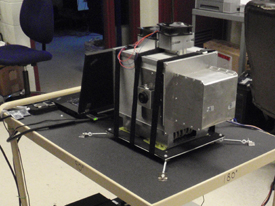The More We Talk, The Less We Might Agree: Study Shows Discussion Can Hurt Consensus-Building On Science/Technology
When it comes to public issues pertaining to science and technology, “talking it out” doesn’t seem to work. A new study from North Carolina State University shows that the more people discuss the risks and benefits associated with scientific endeavors, the more entrenched they become in their viewpoint – and the less likely they are to see the merit of other viewpoints.
“This research highlights the difficulty facing state and federal policy leaders when it comes to high-profile science and technology issues, such as stem cell research or global warming,” says Dr. Andrew Binder, an assistant professor of communication at NC State and lead author of the study. “Government agencies view research on these issues as vital and necessary for the country’s future, but building public consensus for that research is becoming increasingly difficult.” (more…)


